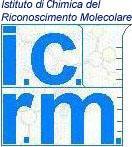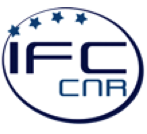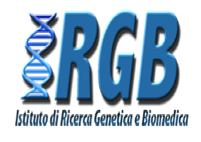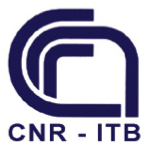 |
CNR INSTITUTES INVOLVED IN AMANDA PROJECT |
 |
The seven CNR Institutes or Units involved in the Project are located in Lombardy, and they are all members of the Lombardy Life Science Cluster.
- The Institute of Molecular Genetics(IGM) is located inside the University of Pavia Campus and it is characterized by a high international level of basic research from which derives a similarly qualified translational research related to the development of bioactive molecules. Its main research activities are: 1) Analysis of the molecular mechanisms that control genome stability during DNA replication and in response to both exogenous (radiation and chemical substances) and endogenous (oxidative stress, RNA metabolism) DNA damaging agents. 2) Analysis of gene expression regulation both at the transcriptional and post-transcription (alternative splicing of transcripts) level in relation to major diseases such as cancer and DNA repair-deficiency disorder (e.g. Xeroderma pigmentosum, Cockayne syndrome, ataxia, SLA) and in response to stressful conditions. 3) Development of molecules with antiviral and antitumor activity.
- The Institute of Molecular Bioimaging and Physiology(IBFM) studies mechanisms of physiology and pathogenesis, from the molecular to organ level, using different technologies, including those of imaging and molecular diagnostics. The main interest is the development and application of methods for in vivo molecular imaging, with particular reference to the PET/CT and SPECT/CT techniques in animals and humans, making use of skills in the areas of radiochemistry, biomedical instrumentation and image processing with advanced algorithms. The IBFM imaging preclinical laboratory is part of the ESFRI EuroBioImaging Research Infrastructure.
- The Institute of Chemistry of Molecular Recognition(ICRM) carries out research and technological development a in the following areas:: 1) Biomolecules (natural bioactive substances and synthesis of compounds of biological interest); 2) Chemical biotechnologies (bioconversions, enzyme technology and analytical methodologies); 3) Mechanisms of bio-regulation (molecular basis of biological regulation and experimental and theoretical studies of molecular recognition). They are involved in studying the principles that determine the biological specificity and bio-molecular recognition by integrating expertise in organic chemistry, computational chemistry, biochemistry and biotechnology. The team that develops analytical methodologies for DNA and proteins combinie surface chemistry expertise for the development of microarrays.
- The branch of the Institute of Clinical Physiology(IFC) in Milan has been active since 1983 as a Clinical Research and Welfare Unit in agreement with the ASST Niguarda Hospital. Its fields of interest are clinical and applied research in the field of cardiovascular pathophysiology. The Unit is equipped with a) an outpatient facility for the collection of clinical data and for the execution of non invasive functional tests for individuals enrolled in clinical research protocols and b) a clinical biochemical laboratory with experience in integrated evaluation of diagnostic biomarkers and prognostic of disease.
- The Branch of the Institute of Neuroscience(IN) in MIlan is located at the Department of Medical Biotechnology and Translational Medicine of the University of Milan and at the Humanitas Hospital (Rozzano). The main activities of this unit is to promote high-level research in neuroscience and in cellular and molecular pharmacology. The research focuses on the study of communication between nerve cells and how physiological or pathological changes of these processes have a significant impact in neuronal pathologies resulting in neurodevelopmental and major neurodegenerative diseases. These processes are important target for drug-therapeutic and preventive interventions that the unit IN develops using modern biotechnological and pharmacological approaches. Technologies and scientific expertise of the unit are based on the use of morphological, biochemical, pharmacological, genetic and electrophysiological techniques addressed to the identification of therapeutic targets, the understanding of drug mechanism of action and the development of disease models in vitro and in vivo.
- The Institute of Genetics and Biomedical Research(IRGB) is an institution whose vocation is to use genetic and biotechnological knowledge to contribute to the study of human disease. The Milan branch is involved in the field of translational medicine, with a focus on diagnosis and treatment of hematological, cardiological and bone diseases. The interaction between the groups promises to be highly productive, since they share common and up to date technologies and interest such as stem cells, deep sequencing, epigenomics and the study of small transcripts in the pathogenesis and therapy of genetic diseases.
- The Institute of Biomedical Technologies(ITB) develops omics methodologies such as genomics, proteomics, metabolomics and bioinformatics applied in the field of human health. The major application areas of interest are: the cancer/stem cells, stem cells in regenerative medicine, inflammation-immunity and neurodegeneration. The Institute has a long expertise in research concerning brain mechanisms in aging and in Parkinson’s disease.








